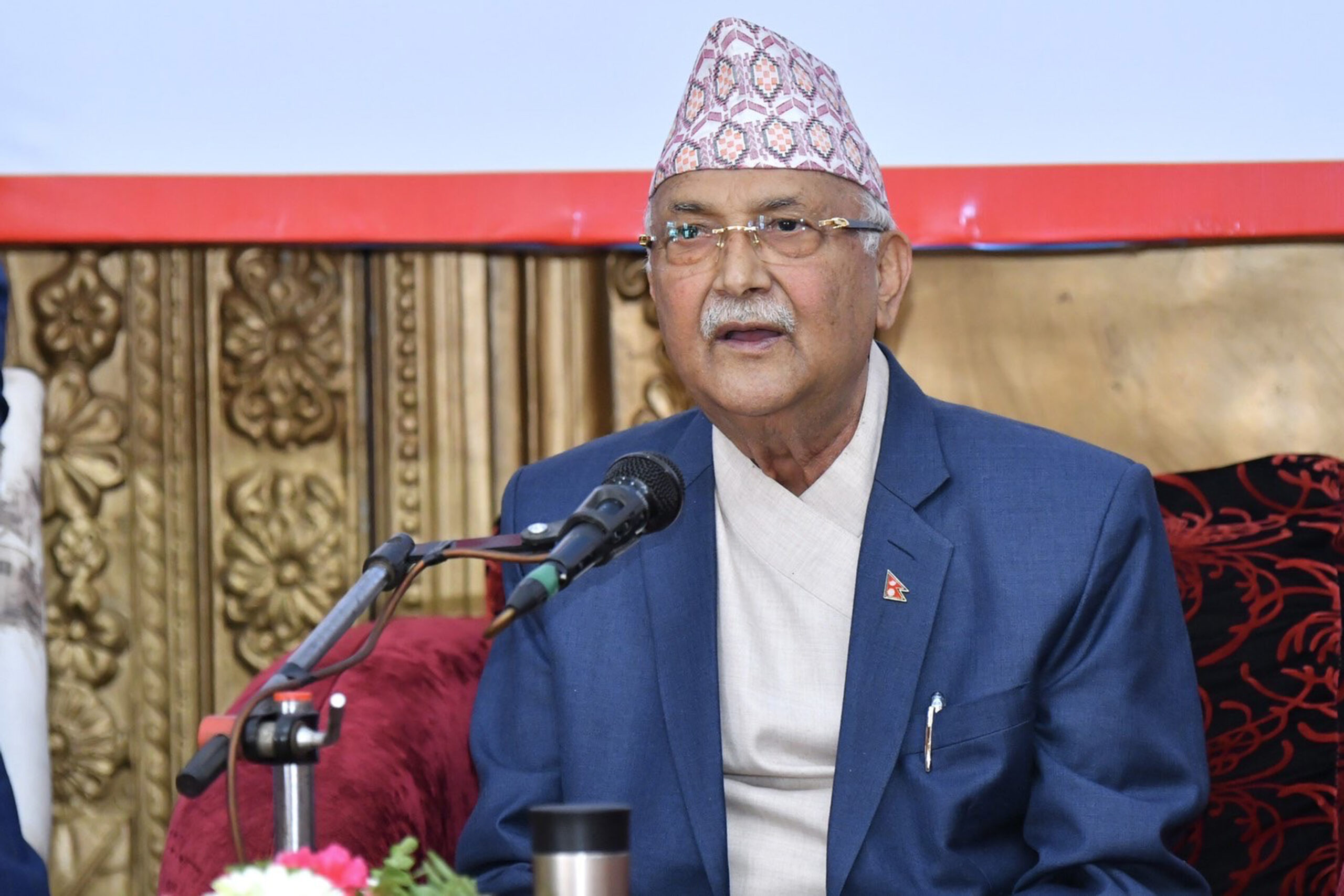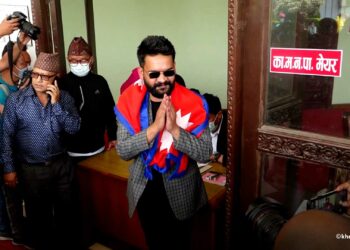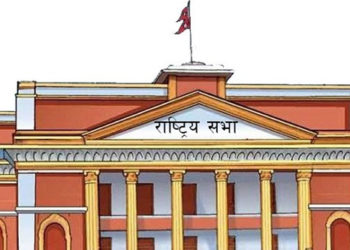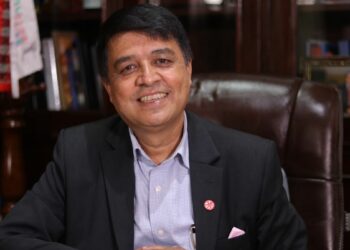The instability that has marked Nepali politics for decades continues to distract from policymaking in government.
Nepal’s constitutional crises have been marked by political infighting, disagreements over federalism, and challenges to democratic governance.
The role of various stakeholders, including the judiciary, executive, and civil society, remains crucial in resolving these issues.
Internal factionalism within the ruling Nepal Communist Party (NCP) has contributed to instability.
Pushpa Kamal Dahal (Prachanda) assumed the office of Prime Minister for the third time on December 26, 2022.
In March this year Prachanda’s CPN Maoist parted ways with the Sher Bahadur Deuba-led Nepali Congress and joined hands with KP Sharma Oli’s Communist Party of Nepal-Unified Marxist-Leninist (CPN-UML).
But the power struggle between the two has significantly impacted Nepal’s political landscape, leading to constitutional challenges and public discontent.
Oli has served as Nepal’s Prime Minister multiple times, but his tenure has been marked by controversies and power struggles.
He continues to play a strategic game in Nepal’s political landscape.
Oli’s efforts to strengthen the position of the CPN-UML mean that the Communist Party of Nepal (Maoist Centre) now has fewer governing partners.
The reconfiguration included cutting ties with Sher Bahadur Deuba’s Nepali Congress, the largest player in parliament’s lower house, and joining hands with KP Sharma Oli’s CPN (UML).
In April this year, Oli presented a political paper at the CPN-UML’s National Representatives Council meeting in Lalitpur.
In this paper, he rejected the idea of broader left unity and emphasised the need for cooperation among like-minded parties to address the country’s pressing issues.
The Janata Samajbadi Party-Nepal (JSP-N), which was one of the coalition partners in Prime Minister Pushpa Kamal Dahal Prachanda-led government, has recently split.
The split within the JSP-N, led by Deputy Prime Minister Upendra Yadav, has drawn attention to the internal dynamics of Nepali politics.
The split was orchestrated by former KP Oli, who is known for his crafty leadership style.
The actions of pro-China KP Sharma Oli who joined Nepal’s ruling coalition in March, and the subsequent political crisis have implications for Nepal’s stability and democratic fabric.
The faction of JSP-N led by the party’s federal council chair Ashok Rai registered the application for this new party named ‘Janata Samajbadi Party’ (without the ‘Nepal’ of the mother party).
On a personal level, Oli dislikes Madhav Kumar Nepal, who split from the UML to form his Unified Socialist party.
He also opposes Dahal’s attempts to broker any political agreement with Madhav Kumar Nepal.
Oli’s preference would be to isolate Nepal politically, but he recognizes the broader puzzle of Nepal’s politics.
Oli’s manoeuvres are part of a larger political chessboard, where alliances, rivalries, and personal dynamics intersect.
The split was cleverly orchestrated by Oli who whipped up reports that Upendra Yadav was attempting to ally with the opposition Nepali Congress (NC) and the ruling party alliance CPN-Unified Socialist led by Madhav Kumar Nepal.
With monetary and other inducements, Oli broke JSPN while Yadav was on an official US visit.
The division within the JSPN could impact the party’s electoral prospects and overall stability.
Both factions will likely focus on consolidating their support bases and positioning themselves ahead of upcoming elections. The split may lead to realignments in coalition politics and potential alliances with other parties.
Oli also has interactions with Rabi Lamichhane, the Chairman of the Rashtriya Swatantra Party (RSP).
The RSP remained a junior ally in the Prachanda-led government from December 26, 2022, until February 5, 2023. It is possible that under Oli’s mentorship role, the RSP withdrew members from the current coalition government arrangement.
The involvement of Rabi Lamichhane in microfinance cooperative scams has indeed become a bargaining point in Nepal’s political landscape.
Reports had surfaced linking Lamichhane to financial irregularities related to microfinance cooperatives.
Former Prime Minister Oli has reportedly used Lamichhane’s alleged involvement as a bargaining tool.
These cooperatives are often involved in providing financial services to rural and marginalised communities.
By highlighting these scandals, Oli aims to exert control over Lamichhane and potentially influence his political decisions.
Oli’s strategy is to weaken Lamichhane’s position and gain concessions in broader political negotiations.
Oli’s previous stunt of releasing a map in May 2020 that included the territories of Kalapani, Lipulekh, and Limpiyadhura within its borders, as part of its Darchula district in Sudur Paschim Pradesh was also aimed at political gains.
These events underscore the complexity of Nepali politics, where personal reputations, scandals, and power struggles intersect.
The situation remains fluid, and the role of various stakeholders will continue to shape Nepal’s future.
The country’s national parties and protesting groups need to find ways to address constitutional disagreements and underlying disputes.
The actions of pro-China KP Sharma Oli who joined Nepal’s ruling coalition in March, and the subsequent political crisis have implications for Nepal’s stability and democratic fabric.
The country faces challenges in balancing internal politics while addressing broader geopolitical concerns.
These developments will most certainly impact the broader political landscape in Nepal, especially as the country grapples with governance challenges.
These moves are a deliberate distraction from Nepal’s poverty which is starkly visible when socioeconomic indicators such as average calorie consumption, access to drinking water, health and sanitation, and literacy are looked at.
Most people reside in rural areas, which are rife with poverty. 60% of people who reside in rural areas are thought to earn less than the federal poverty line (Khadka, 1993).
The difficulties that Nepal’s democratic administration has as a result of growing public expectations and the necessity of finding practical answers to social and economic problems to win over the populace to democracy.
The alarmingly high rates of poverty, particularly in rural areas where a sizable fraction of the population lives below the federal poverty line is a matter of concern.
The government’s decision to print a new map on new 100-rupee banknotes can indeed be seen as a political maneuver.
Nepal has long-standing border disputes with neighboring countries, particularly India. Maps are powerful symbols of national identity, territorial integrity, and sovereignty.
By incorporating a new map on currency notes, the government aims to emphasize its stance on territorial claims and assert its authority.
Currency notes are widely circulated and visible to the public.
The inclusion of specific territories in the map is meant to signal Nepal’s position on these disputed areas.
While printing a new map on currency notes may have political implications, it has zero effectiveness in resolving territorial disputes.
Prachanda seeks a ‘socialist front’ with smaller parties like the CPN (Unified Socialist), the Janata Samajbadi Party, and the CPN (Netra Bikram Chand).
Nepal’s economic advisor, Chiranjibi Nepal resigned following the controversy surrounding the government’s decision to include the disputed map on the new 100-rupee banknotes.
This map reflects Nepal’s territorial claims in areas currently administered by India.
The move has strained relations between the two countries, with India expressing discontent.
Oli’s previous stunt of releasing a map in May 2020 that included the territories of Kalapani, Lipulekh, and Limpiyadhura within its borders, as part of its Darchula district in Sudur Paschim Pradesh was also aimed at political gains.
Nepal’s shifting claims regarding the Kuthi Yankti and Lipugadh streams as part of the Kali River are incompatible with historical treaties and decisions.
These claims also contradict Nepal’s boundary treaties and protocols signed with China.
Introducing a new map can serve as a visual provocation for Nepalis about the government’s stance, appeal to nationalist sentiments and garner support from certain segments of the population.
Such symbolic gestures do not address the underlying issues and are a distraction from more pressing matters, such as economic challenges, or governance issues.
Ultimately, actions beyond symbolism are needed to address complex geopolitical issues.
Speaking at a session of the Federalism Strengthening and National Concerns Committee at the National Assembly, General Prabhu Ram Sharma, the Chief of Army Staff, advised politicians not to provoke India on security issues, for their narrow-ended political gains should be heeded.
Oli is a sly political operator. With ample time before the next elections, he can adapt his political stance as needed.
Amid the political flux, real issues like youth employment and welfare take a back seat in a country where over 40% of the citizens are youth under 40.
His aim is to ensure that the CPN-UML becomes the single largest party in the 2027 general elections, leveraging its strong organisational base.
Oli understands the importance of a strong left coalition or even an electoral alliance to counter right-wing forces.
While publicly criticising the Nepali Congress, he has also sent feelers to the Congress leadership.
Oli is now eyeing smaller parties like CPN (US) and Janmat for co-opting and splitting.
Meanwhile, the Maoist Centre, led by Prachanda, faces an existential crisis as an electoral force.
Prachanda seeks a ‘socialist front’ with smaller parties like the CPN (Unified Socialist), the Janata Samajbadi Party, and the CPN (Netra Bikram Chand).
But Oli Oli wants only two parties to exist in Nepal-CPN (UML) and NC, and in the process end the proportional representation system, ending any political space for non-Pahadi smaller parties.
Nepal’s political landscape remains fragile, with ongoing tensions and challenges.
The country’s democratic fabric is at risk, and addressing these underlying issues is crucial for long-term stability.
Amid the political flux, real issues like youth employment and welfare take a back seat in a country where over 40% of the citizens are youth under 40.









Comment